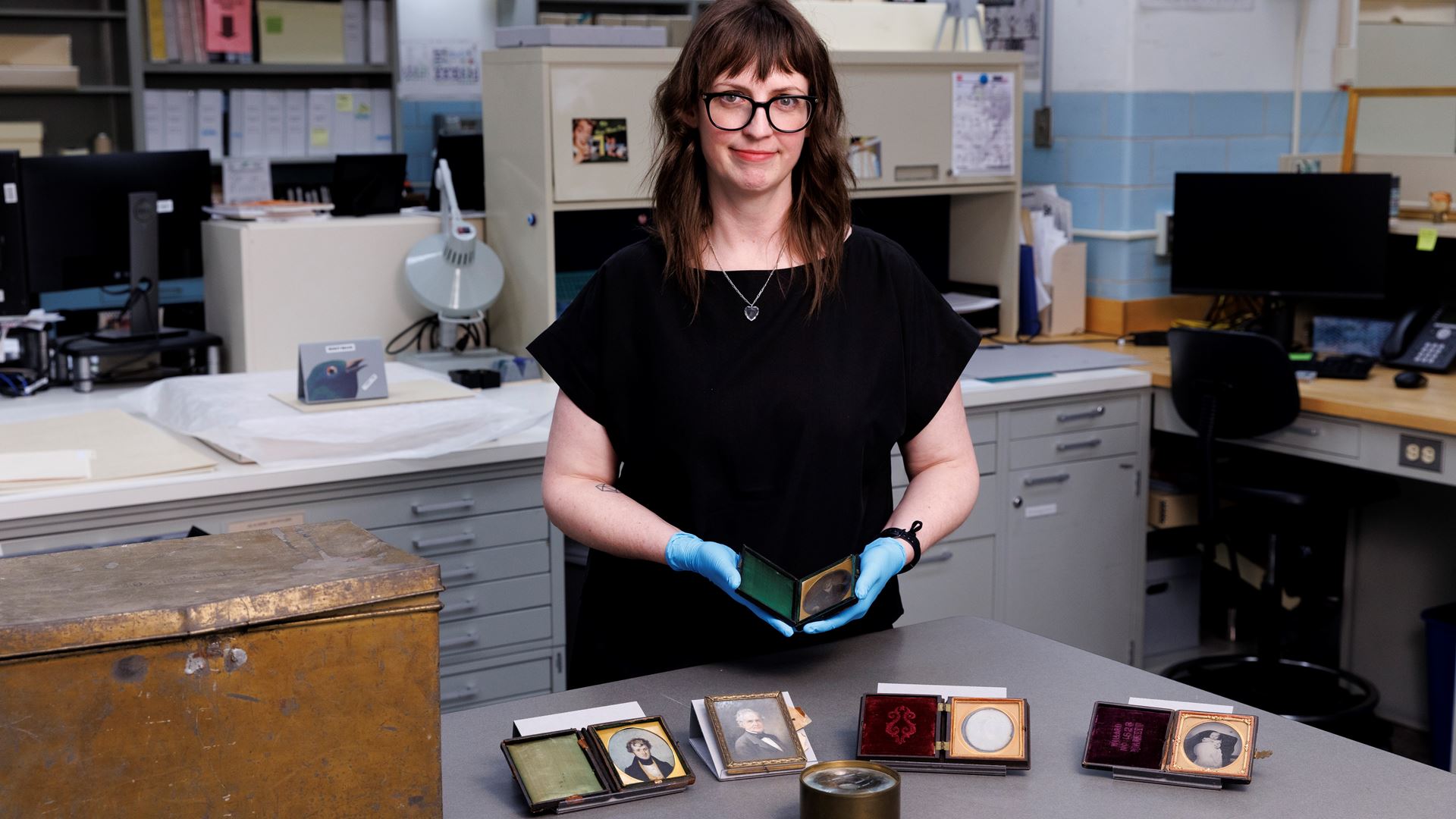Photography Trailblazer’s Collection Donated to Library of Congress
Trove from Photographer Robert Cornelius, who made America’s “First Selfie,” includes Camera Lenses, Portraits of his Children and Patent Applications
The Library of Congress has acquired the collection of a trailblazer in American photography, Robert Cornelius, including his camera lenses, daguerreotypes, cased portraits of his children and patent applications as a gift from his great-great granddaughter, Sarah Bodine. The collection expands the Library’s holdings that complement Cornelius’ famous 1839 self-portrait, which is the world’s oldest surviving portrait photograph.
Cornelius was a metal worker and early adopter of the daguerreotype when he made America’s “first selfie” with a makeshift camera outside his family store in Philadelphia. On the back of the picture, he wrote “the first light Picture ever taken. 1839.” The Library of Congress acquired the image in 1996 along with other Cornelius works as part of the Marian S. Carson Collection.
Bodine recently donated a new collection of Cornelius’ photographic materials, including a daguerreotype taken his studio, portraits of his children and other family members done by other early Philadelphia daguerreotypists; a box of experimental camera lenses; papers associated with his business dealings and personal pursuits; and seven patent applications related to his family’s gas lighting business. Other ephemera in the Cornelius collection include deeds, calling cards, news clippings, a valentine to his wife Harriet Cornelius, the eulogy he wrote for her in 1884 and locks of their hair.
“The collection gives us a much broader picture of Robert Cornelius at the Library, beyond the daguerreotypes we currently hold,” said Micah Messenheimer of the Library’s Prints and Photographs Division.
Bodine discovered Cornelius’ materials in her attic in New Jersey while preparing for an impending move and contacted Rachel Wetzel, an expert on daguerreotypes and a photograph conservator at the Library. Wetzel, who joined the Library’s Conservation Division in 2019, had studied Cornelius’ journey while working for more than a decade at the Conservation Center for Art and Historic Artifacts in Philadelphia.
Cornelius’ Self-Portrait and Photo Studio
A print of Cornelius’ “first selfie” is now part of the new photography exhibition, “Not an Ostrich: And Other Images from America’s Library,” opening March 23 at the Library.
Cornelius’ striking self-portrait, taken during a time of great of photographic experimentation in late 1839, is heralded as a breakthrough in photography. Cornelius set up a makeshift camera with a lens fashioned from an opera glass. He would have had to remain motionless and gaze forward for 10 to 15 minutes to create the image – no small task.
“Taking a portrait is astounding in 1839,” Wetzel said. “Taking a self-portrait is a whole next level up from that. That portrait is incredibly significant.”
The daguerreotype was a photographic process invented by Louis Jacques Mandé Daguerre, who publicly introduced it to the world in 1839. It was a remarkable but complicated process that involved highly sensitive silver plates, hazardous chemicals, and long exposure times.
Thanks to improvements in lighting, cameras and chemistry that also reduced exposure times to under two minutes, daguerreotype portraiture became commercially viable, and Cornelius went on to set up Philadelphia’s first photo portrait studio to much acclaim. Daguerre was so impressed that he reportedly sent daguerreotypes from France in exchange for Cornelius’ work.
The Library of Congress holds a substantial number of daguerreotypes, including ungilded plates, which lack a protective layer of gold chloride and are important to the history of photography. Wetzel created a database, now residing at the Library, to deepen knowledge of Cornelius’ work and techniques, and is currently working with Messenheimer on a survey to document the condition of every daguerreotype in the Prints and Photographs Division.
The Library of Congress is the world’s largest library, offering access to the creative record of the United States — and extensive materials from around the world — both on-site and online. It is the main research arm of the U.S. Congress and the home of the U.S. Copyright Office. Explore collections, reference services and other programs and plan a visit at loc.gov; access the official site for U.S. federal legislative information at congress.gov; and register creative works of authorship at copyright.gov.
# # #
Media Contact: Brett Zongker, bzongker@loc.gov
PR 22-024
03/23/2022
ISSN 0731-3527

